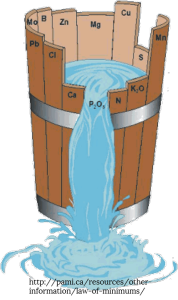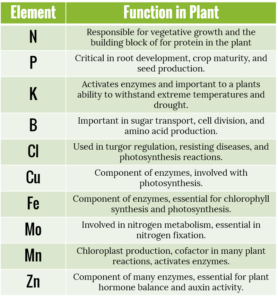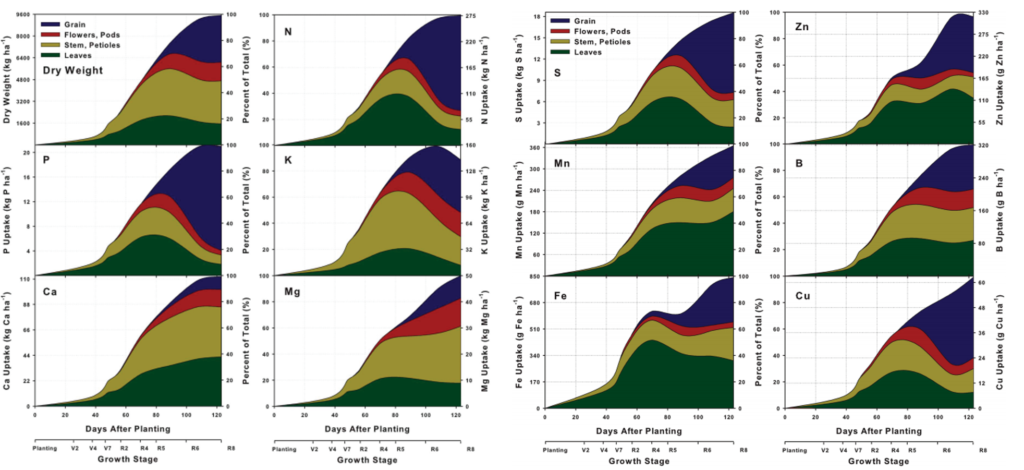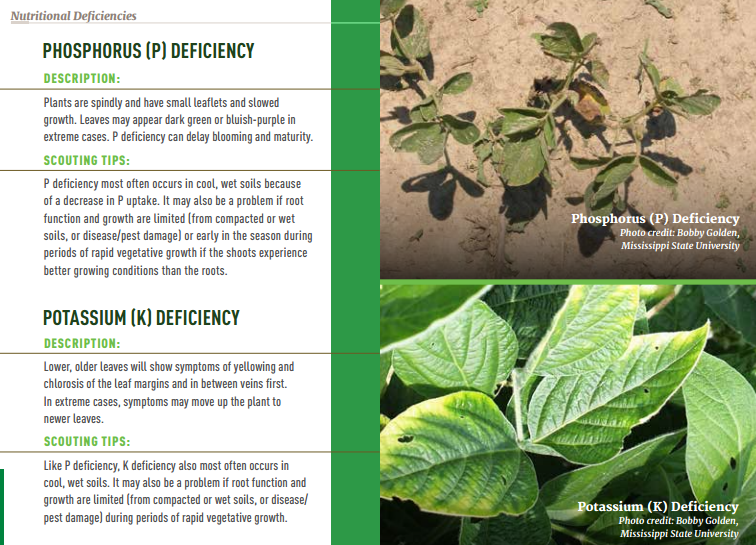Soybeans have long been viewed as a “rotational crop” in North Carolina, and proper fertilization programs for soybeans are often ignored. But, an interest in the production of high-yielding soybeans has stimulated interest in maximizing soybean yield via proper fertilization. There is also interest in in-season nutrient applications to help boost yields.
Soybean Fertility Basics
Soybeans require 16 elements to complete the processes required for growth and seed set. Lack of an adequate supply of any one of these 16 elements will limit yields. Remember Liebig’s Law of the Minimum – that plant growth is limited by the scarcest resource.
Each nutrient has a function in the plant. Below is a chart of some of the important functions of the most common plant nutrients.
Despite soybeans often being thought of as a “hands-off” crop, it is actually very nutrient-intensive compared to many other crops. For perspective, it takes 1.5 to 3.0 times greater aboveground P and K uptake to produce a bushel of soybeans than a bushel of corn. Below is the amount of common nutrients needed to produce 50-bushel soybeans.
In addition to grasping the amount of N, P, K, and micronutrients needed to produce a soybean crop, it’s also important to think about when in the season the crop will need each of the required nutrients. Below is data from the University of Illinois. Uptake of each nutrient is presented over the growing season, as it’s partitioned into leaves, stems, flowers, and grain. Notice for most nutrients, rapid uptake doesn’t really begin until R2- R4. Therefore, it is important to implement agronomic practices that ensure nutrient availability during late-season growth, to meet soybean fertility demand.
So how much (if any) N, P, K, and micronutrients should you be applying? While the jury is still out N applications for soybeans, having adequate levels of P and K, as well as the micronutrients, are essential to maximizing yields in your crop.
Soil testing is the best way to determine if your fertility levels are adequate and if not, what you should be adding. If you didn’t soil test to determine proper fertility levels, be on the lookout for deficiency symptoms this season so you can correct for next year.
While soil testing is the best way to determine if your fertility levels are adequate, soil test recommendations for growing soybeans in North Carolina have not been updated in over 20 years. There have been questions if our current soil test recommendations are adequate so the NCSPA sponsored research with the NCDA to start evaluating current soil test K recommendations. 2016 was the first year of testing and testing was carried out at 8 locations across the state to see if the current recommendations are appropriate or if they need to be updated.
In the first year of the study, no yield response to K was observed across 8 sites tested. This is good news as it suggests current soil test K recommendations are adequate! The test will be repeated in 2017 to confirm.
Come back next week when we will look at some data from N application tests to begin to address the question about the profitability of N applications in soybeans.
References:
Bender, R.R., J.W. Haegele, F.E. Below. 2015. Nutrient uptake, partitioning, and remobilization in modern soybean varieties. Agron. J. 107:563-573.
Heatherly, L. 2016. Nutrient management for soybean production. Mississippi Soybean Promotion Board. http://www.mssoy.org/uploads/files/soil-fertility-white-paper-oct-2016.pdf.
Slaton, N., T. Roberts, J. Ross. 2013. Fertilization and liming practices. Arkansas Soybean Production Handbook. University of Arkansas. http://www.mssoy.org/uploads/files/soybean-fert-ark.pdf.












